Introduction: Setting the Stage for Hybrid Change Management
In today’s fast-paced business environment, organizations are constantly evolving to stay competitive. Whether it’s adopting new technologies, shifting operational strategies, or transitioning back to the office after years of remote work, managing change has become more complex than ever. The stakes are high, and there’s little room for error.
Successfully navigating these transitions requires more than a one-size-fits-all solution. It demands a team equipped with the right mix of skills, perspectives, and experiences. This is where the hybrid team approach comes in—a powerful combination of internal staff who know the company’s culture inside out, and external experts who bring fresh insights and best practices.
In this blog, we’ll explore why hybrid teams are key to exceeding your change management goals. Whether you’re managing a large-scale transformation or making more subtle operational shifts, hybrid teams help you manage the turbulence with confidence and precision.
Section 1: Why Hybrid Teams Matter in Change Management
 As the complexity of change initiatives grows, the concept of hybrid teams—blending internal and external professionals—becomes crucial. Large-scale transformations, like returning to the office after remote work, require more than just internal resources or outside consultants. A hybrid team ensures you have both deep institutional knowledge and external expertise to guide the organization through change.
As the complexity of change initiatives grows, the concept of hybrid teams—blending internal and external professionals—becomes crucial. Large-scale transformations, like returning to the office after remote work, require more than just internal resources or outside consultants. A hybrid team ensures you have both deep institutional knowledge and external expertise to guide the organization through change.
Consider the recent decisions by companies like Amazon and Zoom, which are now requiring employees to return to the office. These moves have sparked concerns around employee morale, productivity, and flexibility. Without proper management, such shifts can lead to disengagement or even increased turnover. But with a hybrid team in place, you can mitigate these risks.
Cultural Alignment & Internal Knowledge
Internal team members are essential for ensuring that change aligns with the company’s culture. They understand the organization’s history, people, and norms that can either support or derail a change initiative. This cultural insight is critical when communicating the change to employees, identifying resistance points, and maintaining morale.
In a return-to-office transition, for instance, internal employees can help leadership understand how the shift may be perceived by various departments, ensuring communication and support structures are in place to keep employees engaged.
External Expertise for Best Practices & Objectivity
While internal teams bring cultural context, external experts offer fresh perspectives and industry best practices. They aren’t hindered by internal politics or biases and can objectively assess the organization’s strengths and weaknesses. This is critical for designing a strategic approach to change.
External consultants, experienced in managing similar transitions, bring tried-and-true methods for overcoming resistance, improving communication, and maintaining productivity. Their ability to anticipate challenges and implement proven solutions accelerates the process.
Retaining Institutional Knowledge & Building Long-Term Capacity
One risk of relying solely on external consultants is that they often take institutional knowledge with them when they leave. This can leave internal teams struggling to manage future changes. Hybrid teams prevent this by keeping internal staff deeply involved throughout the process, ensuring knowledge is retained and capacity is built within the organization.
As internal employees gain hands-on experience in managing change, they are better equipped to lead future initiatives, reducing the need for external resources and making the organization more resilient.
Section 2: The Benefits of Hybrid Teams
 Hybrid teams offer unique advantages for change management by combining internal staff’s understanding of the organization with the specialized expertise of external consultants. Here are the key benefits:
Hybrid teams offer unique advantages for change management by combining internal staff’s understanding of the organization with the specialized expertise of external consultants. Here are the key benefits:
Building Long-Term Capacity
Hybrid teams foster capacity-building within your workforce. External consultants bring specialized knowledge and strategies, but it’s your internal team that carries the change forward after the consultants leave. This hands-on experience strengthens internal teams and makes them more confident in managing future transformations.
Reduced Learning Curves
Internal employees already understand the organization’s culture, systems, and internal politics, allowing external consultants to hit the ground running. This reduces the friction often associated with bringing in outsiders. At the same time, external experts bring proven methodologies and frameworks that expedite the change process, creating a dynamic where both internal and external members benefit from each other’s expertise.
Cost-Effective Solutions
Hybrid teams are often more cost-effective. External consultants are brought in for specific, high-impact areas, while internal staff handle ongoing management. This balance optimizes costs by using external resources where they are most needed while ensuring long-term sustainability through internal capabilities.
Section 3: Real-Life Example – Leading a Hybrid Team for Strategic Success
In 2013, long before remote work became a widespread necessity, I was tasked with leading a strategic workforce transformation for a large organization. My team of just four to six people supported 23 executives across the country while managing both ongoing business needs and large-scale change initiatives. One of our most critical tasks was transitioning the organization toward a more remote workforce—a challenge that required far more than our small internal team could handle alone.
By blending our internal expertise with external consultants, we augmented our team quickly and efficiently. Here’s how the hybrid approach led to unprecedented success:
Staff Augmentation
We quickly brought in the specialized skills we needed without the lengthy process of hiring full-time employees. With a consulting contract in place, I could onboard experts who filled gaps in our internal team, bypassing bureaucratic delays.
Short-Term Expertise
The hybrid model allowed us to bring in consultants for specific phases of the project, pivoting as our needs changed without committing to long-term hires. This flexibility ensured we had the right skills at the right time.
Access to Proven Resources
External consultants gave us access to a wealth of previous work, frameworks, and best practices that our internal team wouldn’t have had otherwise. These resources helped accelerate progress while avoiding common pitfalls.
Budget Optimization
By balancing internal and consulting expenses strategically, we optimized performance while minimizing costs. This approach allowed us to stay within budget targets and deliver on financial metrics like EBITDA.
Section 4: Managing the Transition Back to the Office with a Hybrid Team
 As companies like Amazon and Zoom mandate a return to the office, organizations must manage this transition carefully to avoid backlash. After years of remote work, many employees value the flexibility of working from home. A hybrid team is particularly suited for managing this shift.
As companies like Amazon and Zoom mandate a return to the office, organizations must manage this transition carefully to avoid backlash. After years of remote work, many employees value the flexibility of working from home. A hybrid team is particularly suited for managing this shift.
Internal Team Members Provide Cultural Context
Internal employees understand how different teams might react to being asked to return to the office. They help frame messaging in a way that resonates with employees, acting as liaisons between leadership and staff to gather feedback and address resistance.
External Experts Bring Proven Strategies
External consultants bring experience managing similar transitions and can provide objective best practices. Their insight helps anticipate logistical challenges and resistance, ensuring a smoother and more efficient transition.
Section 5: Why Executives Should Embrace Hybrid Teams for Strategic Change
The hybrid team model is flexible, allowing organizations to tailor their approach to specific needs. Here are three key ways to structure a hybrid team:
- Hiring External Individual Contributors: For organizations with strong internal teams but skill gaps, external specialists can provide needed expertise without long-term commitments.
- Bringing in a Strategic Advisor: A strategic advisor can guide the internal team, offering high-level expertise at a lower cost than a full consulting team.
- Full-Service Consulting Team: For complex, high-stakes transformations, a full consulting team may be necessary, partnering with internal staff to manage the entire change effort.
Conclusion: Take Your Change Management to the Next Level
Managing change today requires a hybrid approach tailored to your organization’s specific needs. Whether you bring in individual contributors, a strategic advisor, or a full consulting team, hybrid teams ensure you retain institutional knowledge while building long-term capacity. Ready to explore which model works best for your organization? Let’s discuss how you can create a change-ready, resilient workforce.





